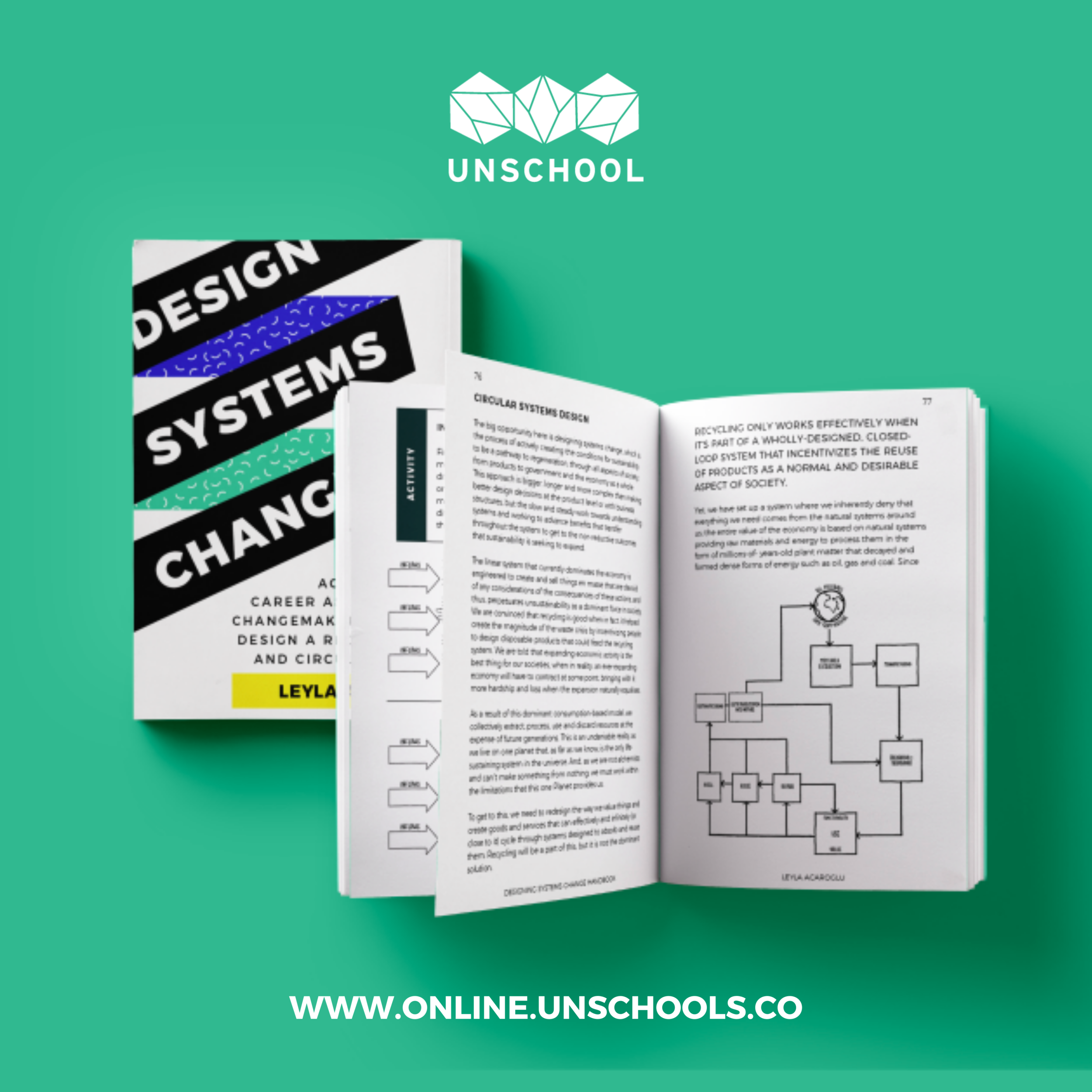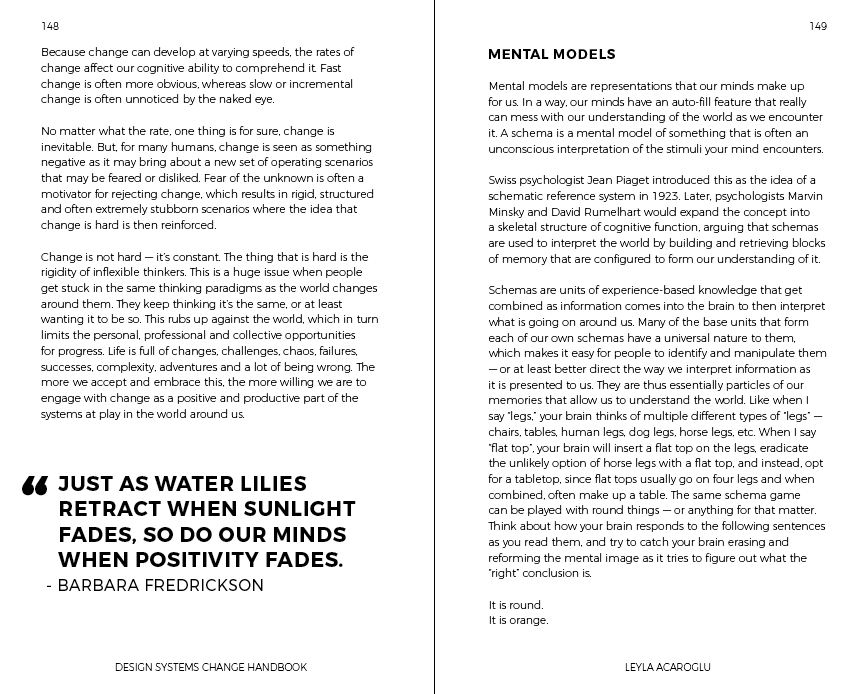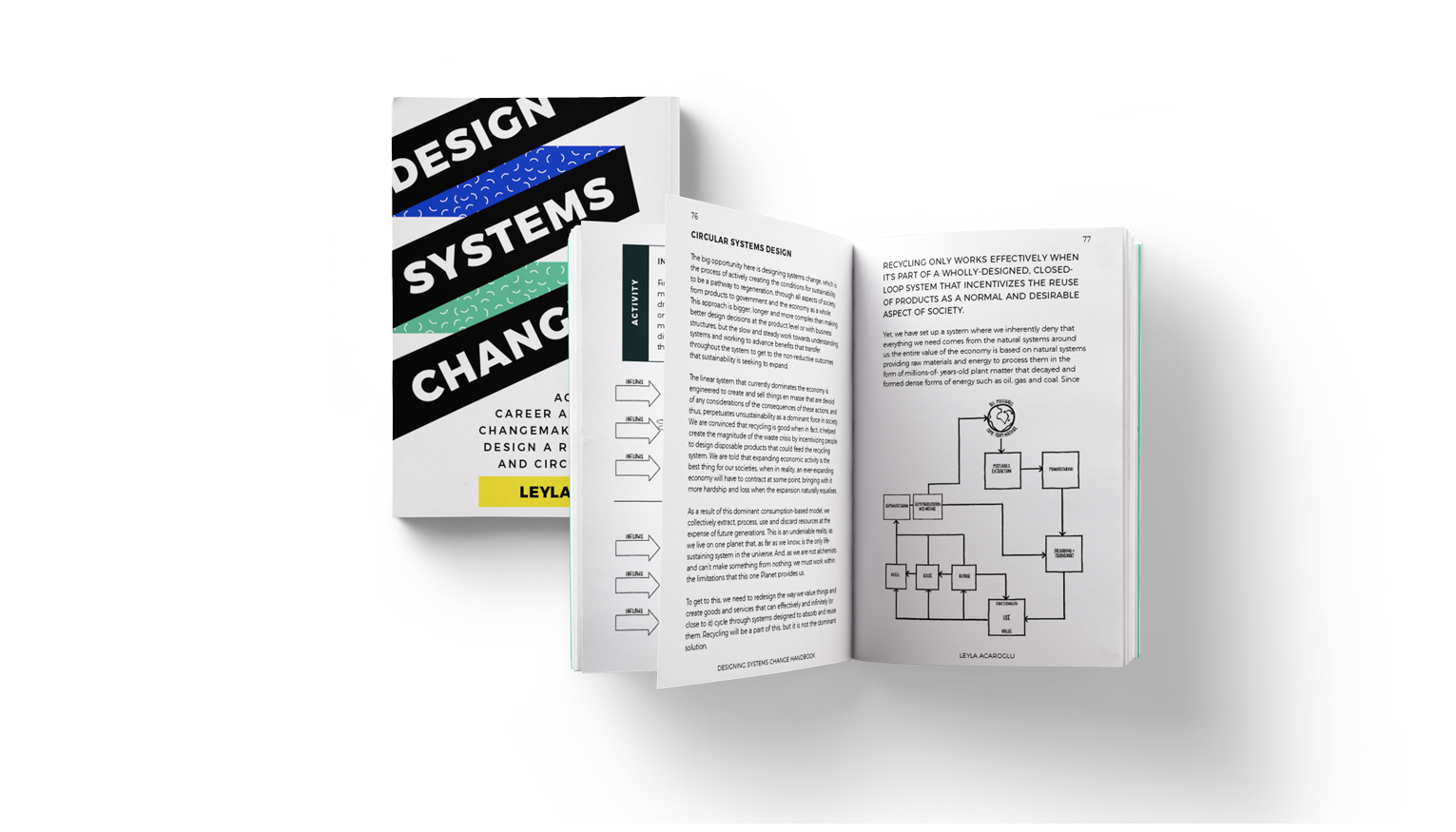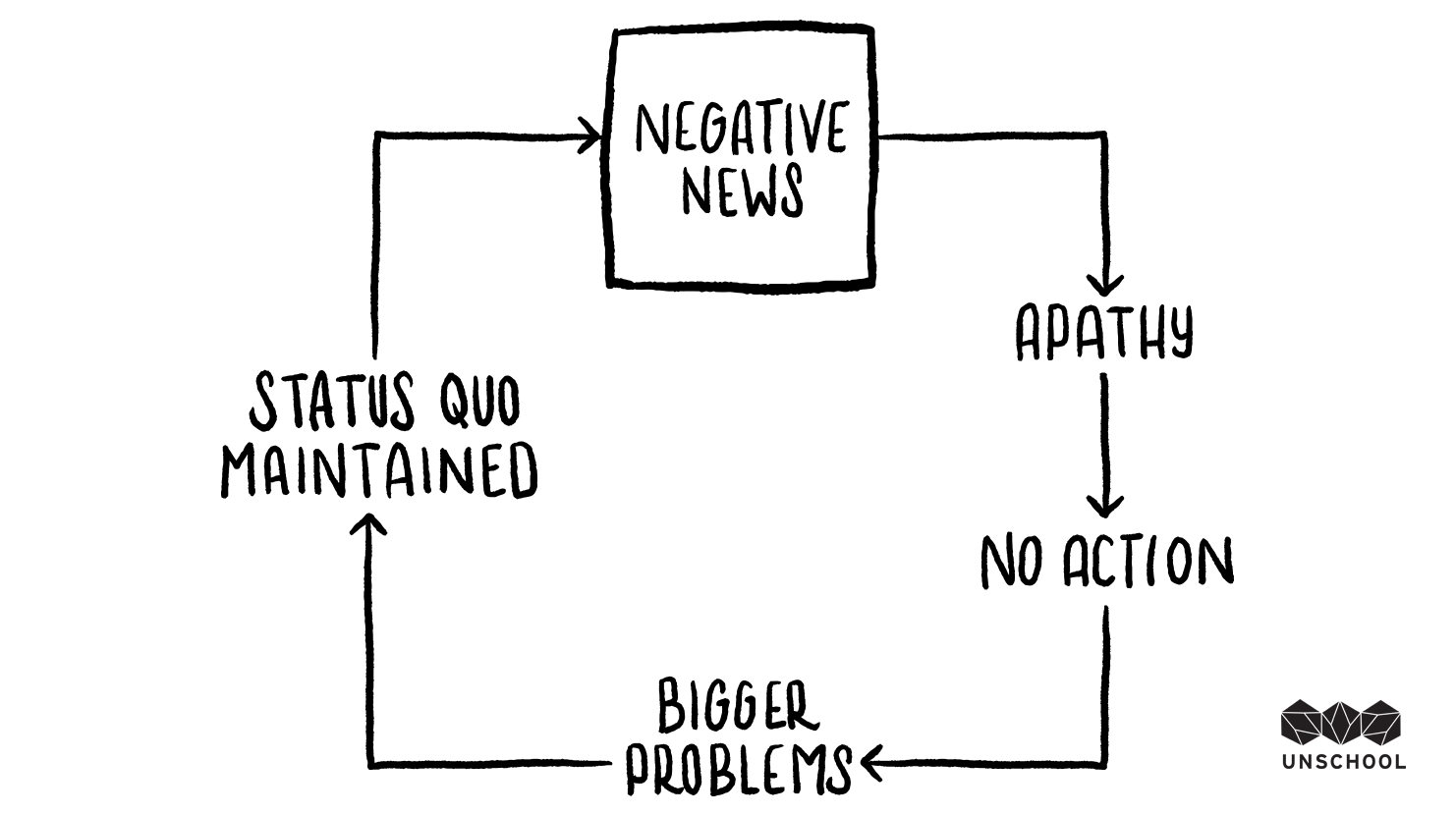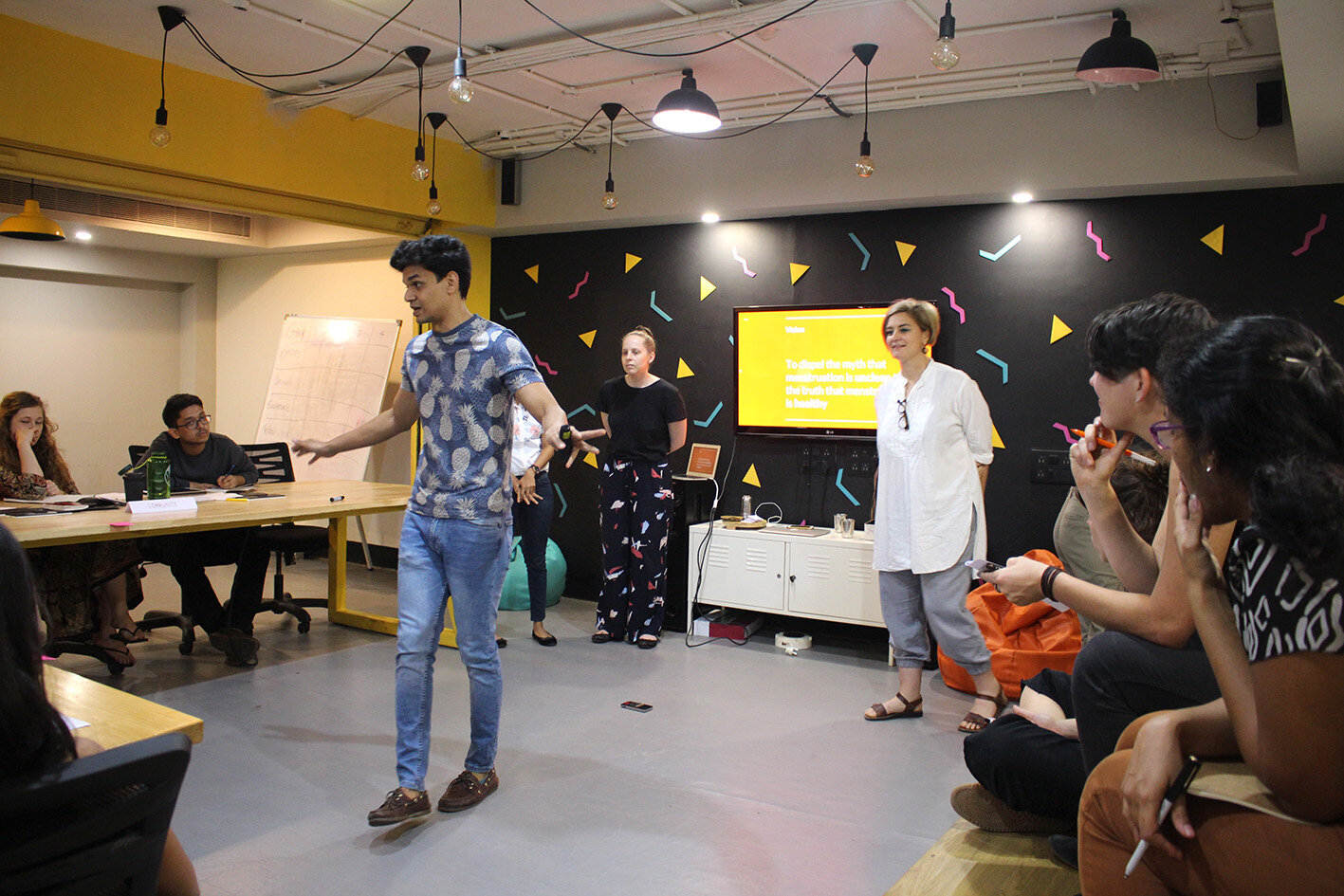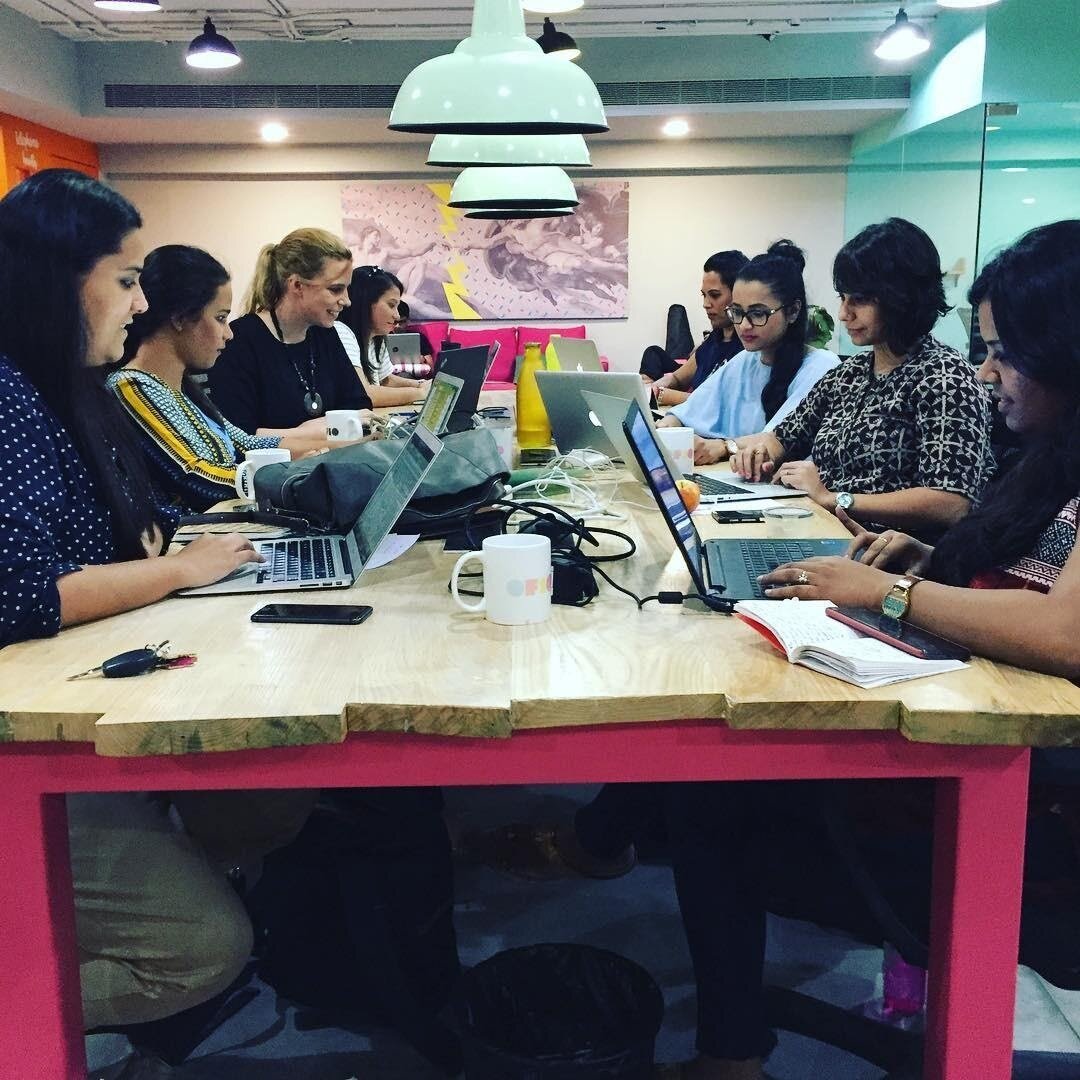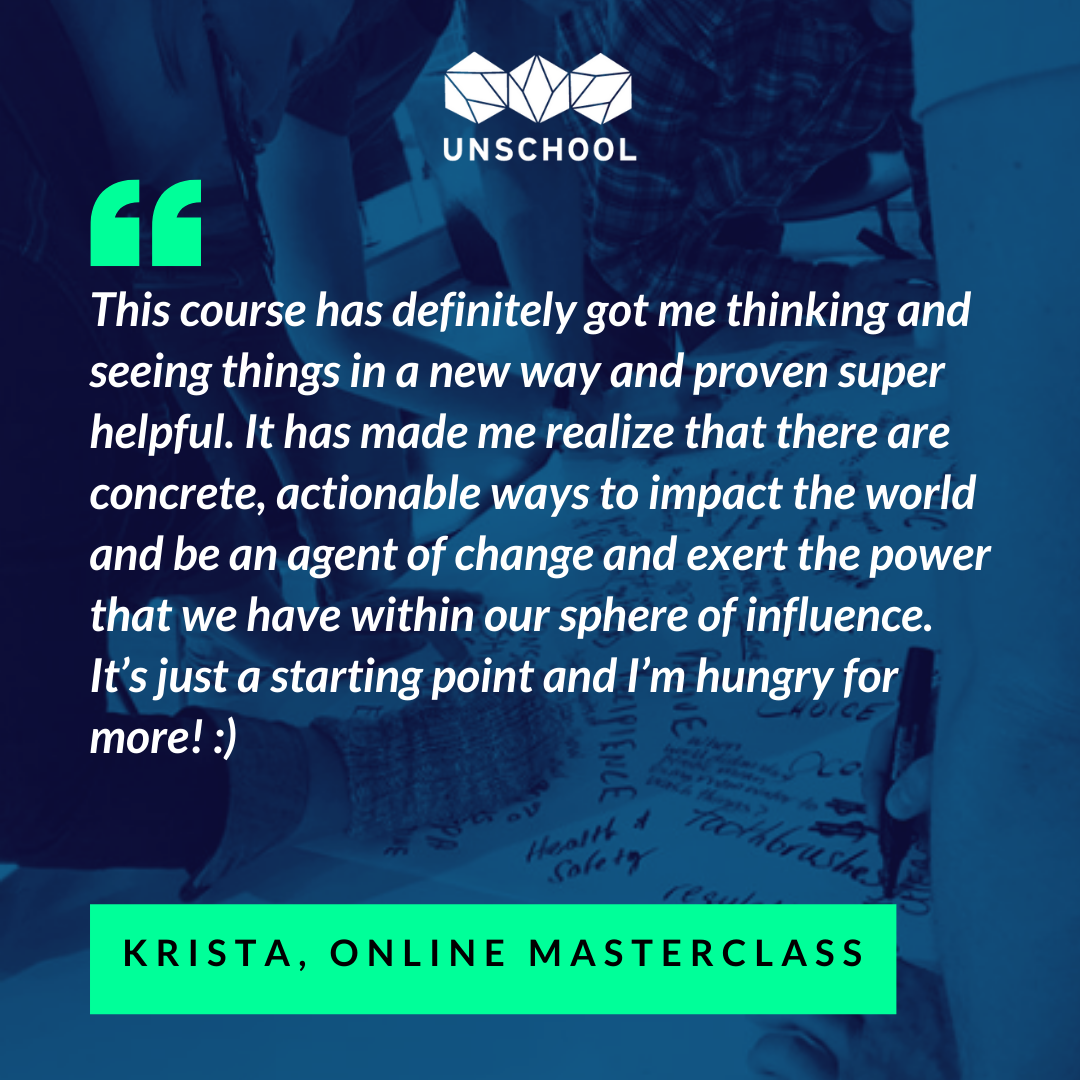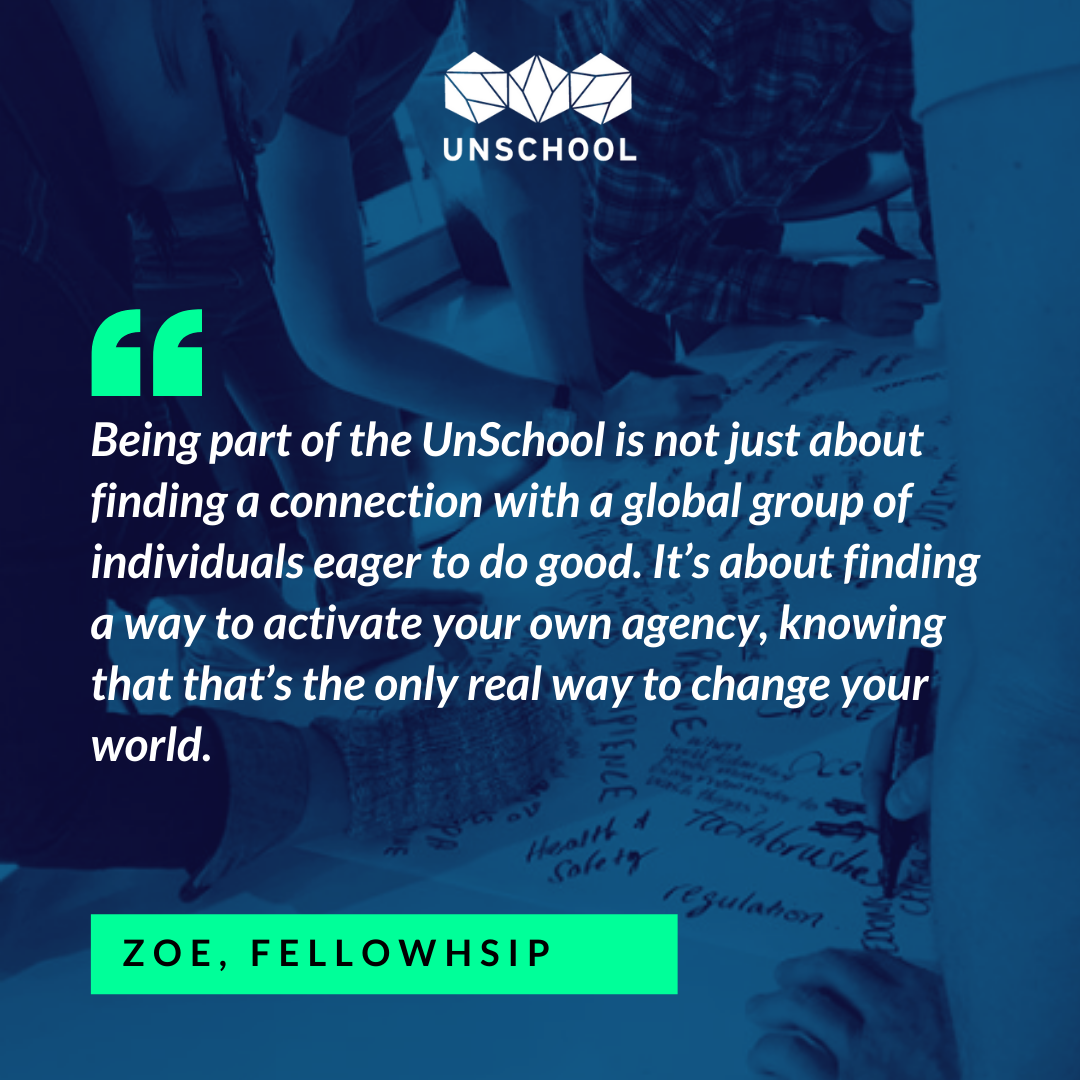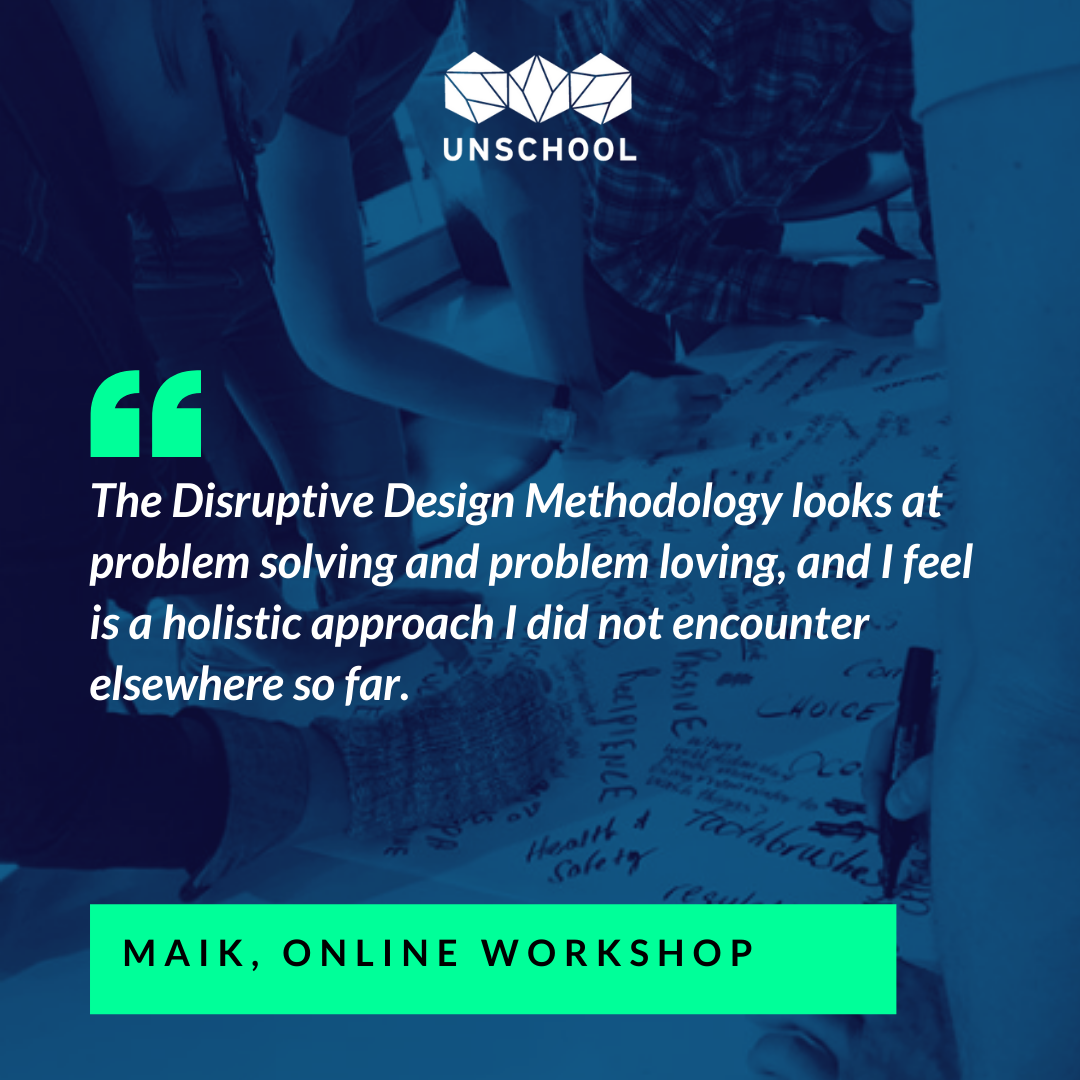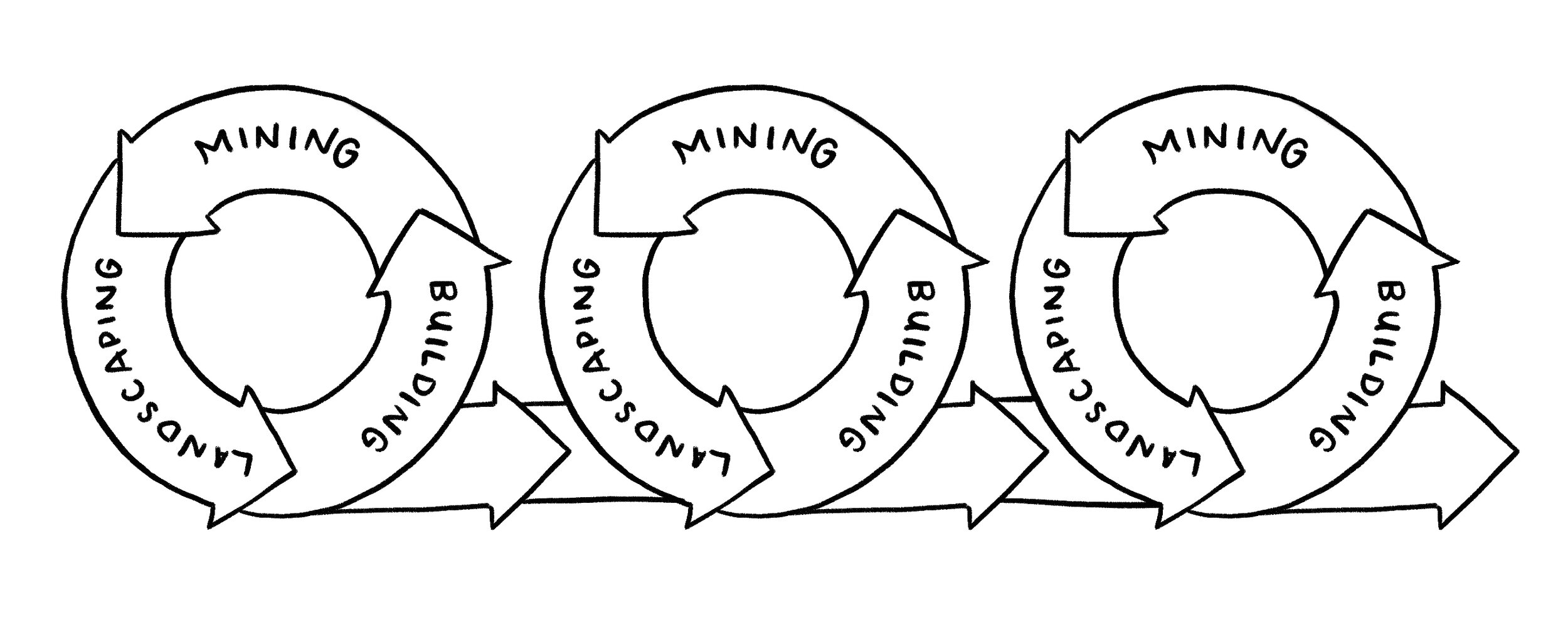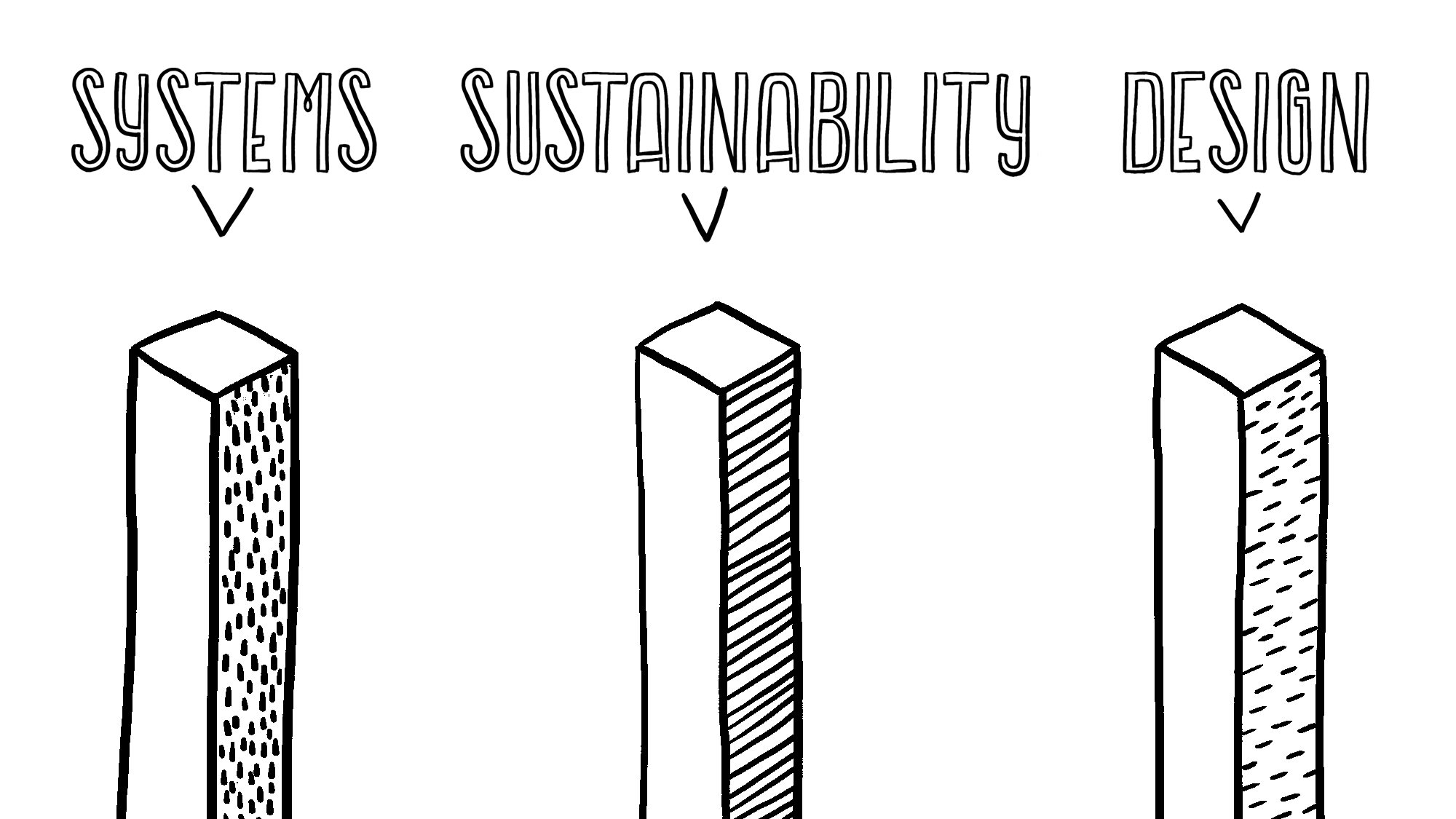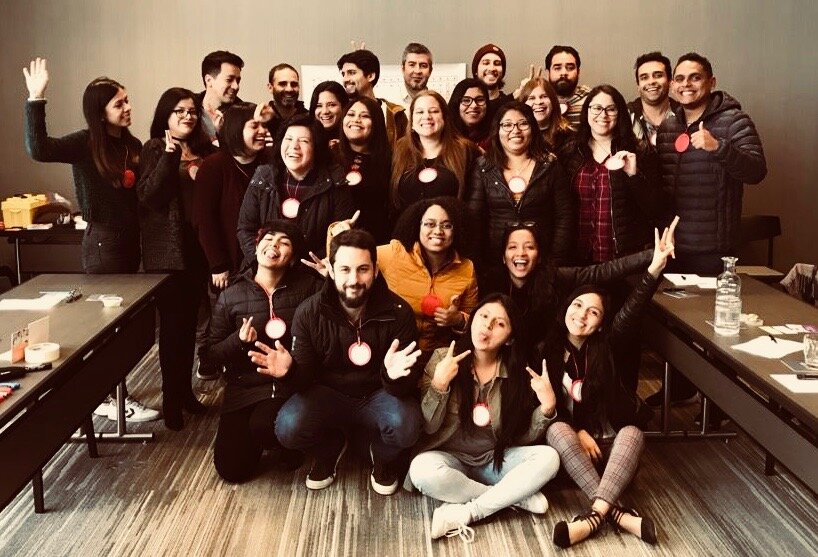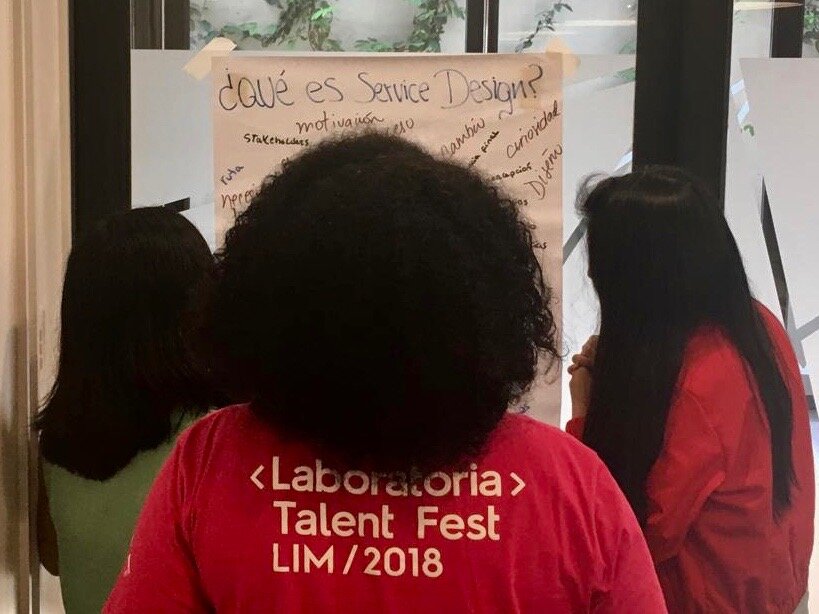Today’s the big day! We have been working extra hard to get it ready to release (Covid-19 and all!). The new handbook by Leyla Acaroglu, Design Systems Change is ready to transfer creative provocations, reflective activities and fascinating knowledge on design, systems and change directly from its digital pages to your brain!
Accidentally released just in time for a unprecedented change in our entire world, Discover how to activate change plus build the knowledge and resilience needed in these constantly-changing times by downloading the e-book here.
Over the last three weeks, we have been sharing fascinating excerpts from the new handbook that you can read here, here and here. In this week’s journal, we wrap up our series of sneak peeks by sharing another brain-activating excerpt from the final section on Change, all about the cognitive impacts that the speed of change has, taking a hyper-focus on climate change.
The world has changed rapidly over the last week, and many people around the world are now dealing with this extremely fast state of change. With this week’s excerpt being all about the way that the speed of change affects us, hopefully it will offer some food for thought during these reflective and challenging times.
Excerpt from Design Systems Change, By Leyla Acaroglu
SPEED OF CHANGE
Things that accumulate slowly over time make it hard to tell what is happening until there is a really obvious tipping point, like when you leave something in your fridge for too long and mold slowly grows — first you can hardly see the tiny blue spores colonizing last Sunday’s dinner, but then suddenly it’s a full-on mold infestation, and it almost always seems to have appeared out of nowhere.
The rate of change affects our ability to see and comprehend it.
Slow-moving change is a beautiful thing in nature. Leaves turn golden and fall to the ground, we grow old somewhat slowly, hair graying overtime, skin wrinkling at a much slower rate than a dehydrating zucchini in your fridge. But the incremental changes in our atmosphere, the daily contributions of carbon and other gasses like methane back into the open space between the soil and the sun, for example, this slow seemingly invisible version of change is a significant challenge for us to comprehend, as it makes it very hard for people to accept the impending reality that the planet is warming as a result of our actions.
Incremental changes, over time, have significant accumulated impacts, unless there is a mitigating factor that alleviates the increase (a balancing feedback loop). When you are boiling water on the stove with the lid on, it starts off all calm and then suddenly the heat generated turns into steam-filled bubbles which want to escape, and as they get pushed to the surface steam accumulates inside the small space between the water the lid, and suddenly, all that trapped steam energy escapes in the form of a rattling lid and spurting hot water. The cumulative outcome of slow change is hard to see until the pot is actually spitting the water all over the place as you attempt to calm the storm inside it.
Most of us are oblivious to the way the planet regulates temperatures through complex interconnected systems, from the ocean currents, carbon cycle to the seasons and wind systems. The relationship between these is where the perfect living conditions for life have come into being, we have lived in a relatively stable climatic period of 10,000 years called the Holocene.
Yet subtle shifts in the natural systems that regulate the temperature over time has starting to jeopardize the fragile space between the Earth and the Atmosphere. We feel like we live on a stable planet, one in which days tick by and not much changes, except for the leaves during autumn and the politicians in government every few years. But actually, we live in complete chaos. The systems around us are constantly changing, many of them through the interaction with our human-created interventions, we just don’t have the time-perception to see it in real time.
We are living in the equivalent of that pot of water right before the moment of boiling, and the person responsible for watching it has walked away. The climate crisis is a result of millions of micro actions by industry, individuals and governments, a multi pronged attack of sorts as greenhouse gas emissions are not just from the burning of fossil fuels (although this is quite a lot) but also from gasses such as methane and hydrofluorocarbons which are released as a result of many different activities embedded in the economy and all aspects of our daily lives.
In some situations, it’s easier to see how actions lead to reactions. For example, we have a fight with a loved one and the emotional fallout is usually immediate. We can see how small things, like regularly spending too much money, or ignoring an illness for too long, or trash building up in the kitchen bin, quickly accumulate into larger problems that require us to take action to alleviate the issues. You need to say sorry, go to the doctor or take the trash out. Unless something is done to change the accumulating situation, then you will find yourself in a sad, sick or smelly mess. Yet many of the accumulated impacts of our actions when it comes to contributing to climate change, for example, are well beyond the scope of our immediate perception. We don’t see any of the released gasses accumulating, this is the danger of hard to see change.
If you say, chipped away at your savings bit-by-bit, it may not look that bad day by day, but soon you will have nothing left. Every action has an impact by either adding to or taking away from something else. In a closed system like Planet Earth, this means all our incremental changes accumulate and eventually create a tipping point of change. That change can be ‘good’ or ‘bad’; this just depends on what your perspective on things are and what the consequential outcomes will be. For example, when your government has elections, depending on who is elected and what they stand for, some people are elated by the change in government whereas others are in despair. This one change generates polar opposite emotional states. But no matter what political position you take, accumulated gases in the atmosphere are being trapped and generating a locked-in effect that prevents heat from escaping the Earth’s atmosphere, and unless we dramatically reverse the release of these gases, by changing the way our societies and economy is designed, the resulting heat will continue to push back against the system that regulates the weather and thus create flow on effects that none of us want to have to deal with.
It can’t be a toss up between the economy and the planet. There is no economic activity without natural resources, and there is no human life (or any other life, for that matter) unless we have complex interconnected systems working to create the base materials that enable life to flourish, like water, oxygen and food. There is an old saying that I am reminded off regularly; it’s a bit hippy but remains true: “There are no jobs on a dead planet.”
The economy is still largely run on oil, but not just through the stuff that’s burnt to keep the lights on or the transport sector moving. The design of our houses and cities operate as concrete heat traps, this creates an increased reliance on energy intensive products like Air Conditioners. Around 10% of global energy use is currently dedicated to keeping interior space temperature controlled. In Japan, after the tsunami hit and took out the Fukushima Nuclear reactor, the power supply to Tokyo, the second most populated city in the world, was sketchy. As life started to resume there needed to be drastic energy saving measures, so workplaces implemented dress code changes (even Hawaiian shirt days) to encourage casual dress as a way of decreasing the amount of AC needed to keep workers comfortable and productive. The culture in Japan is to wear full suits, even in smelting summer temperatures, thus requiring higher amounts of AC to be used in offices. The International Energy Agency predicts that by 2050 over 5.6 billion AC’s will be in use, that’s up from the 1.6 billion used in 2018. Currently, Japan, the US and Korea are the most AC obsessed nations in the world, but the predictions are that China and India, with a combined population of 2.8 billion people, will contribute to a global spike in energy needs for powering AC units. Of course, one of the main drivers for the need to increase AC use is climate change.
This is a dynamic relationship between what we do and what then happens to us. Hurricanes get their energy from warmer sea temperatures. They grow stronger with all the extra moisture in the air, and then they wreak havoc on the humans who unwittingly helped create the conditions for them to grow by pumping CO2 into the atmosphere via constantly running air conditioning units to stay comfortable in poorly designed houses. It’s a vicious feedback loop whereby the things that we design to cure one problem create the conditions for a bigger problem to occur.
House design plays a big part in the need for AC. Insulation, eaves over windows and location-specific construction materials and techniques can dramatically reduce the need for AC, but instead, all over the world, we now have these shoddy pre-designed fabricated, un-insulated, eave-less heat-boxes being built alongside giant glass and metal skyscrapers, all of which attract and store heat. It’s called the “urban heat island effect”, when so much concrete and heat-absorbing surfaces, like black paved roads, suck in and store heat during the day and then pump it back out at night, increasing the temperature by several degrees. In Los Angeles, where the city is designed around cars and thus has a huge amount of land dedicated to black roads, in a creative attempt to address this, roads have been painted white as a way of reducing this effect.
Sadly, as more tragic weather related events, triggered by a changing climate, such as hurricanes and Tsunamis, when they hit a city they increase the gross domestic product (GDP) of the nation it affects as all the damaged goods need to be replaced, increasing consumption. New air conditioners purchased, new cars and TVs, clothes, sofas, mattresses and kitchen utensils, people will go out and buy all the everyday things they need to live their lives. Emergency services will truck in bottled water and bulk amounts of food. People will go into debt to get their basic needs met. All of the recovery actions from tragedy will look good on the balance sheets of the nations affected, reinforcing just how broken our systems of economic measurement and incentives are.
Added to this all is that the inefficiencies of our current energy production systems is staggeringly bad. The old-school way of getting power to customers has been to burn energy-dense things found under the ground like coal, natural gas or crude oil. They are burned to heat water to make steam to drive turbines, which then creates energy that has to be transported to the end-user along wires. Thanks to the laws of thermodynamics, about two thirds of the energy embedded in the raw materials make it into the grid system in the form of electricity, and then another 5% of that is lost in the transmission down the line. Then there’s waste energy at the home, and the impact of power lines falling and creating fires, of which many towns in rural California now have regular intentional blackouts to decrease the risk of wildfires starting, forcing a move to small-scale, decentralized solar grids. One of my favorite facts about the inefficiencies of current energy generation is that old power stations cant be turned off or slowed down; they have to keep running no matter what the demand is. And since we have peak energy demand points, like when the office day starts, or everyone gets home and turns on their TV’s at the same time, energy companies have to run their systems at a high rate to accommodate this peak demand. Which means overnight when less energy is used, in some cases partnerships are set up with other types of energy providers to make better use of this wasted energy — like a coal power plant selling cheap energy to a hydroelectric plant so that it uses the night energy to pump water back up to the top of the dam so it can be released during the day.
Herein lies the issue with incremental and invisible changes: they are often so hard to make visible that denying them is easier than acknowledging their reality and they happen so slowly that we all become habituated to them. Just like any cycle of addiction, noticing and then admitting you have a problem is often the hardest part.
Slow changes just end up becoming normal.
Like how each year the summers get hotter and drier, or the hurricanes come more frequently or with more intensity. First they are isolated incidents, with enough time in between them to forget about the last one when the new catastrophic event happens. This slow normalization process conditions us to accept the new operating environment, so by the time the events are more frequent, they are now a normal part of life, dulling us from the urgency that is needed to pull back the domino effect of a changing climate.
It is now even more normal that we hear how each year was is the hottest and driest on record, weirder winters with less rain or much more than normal, earlier springs, freakier storms, more intense and regular wildfires. This is change in action. Sure there are many factors contributing to these changes, but the climate is one thing we have been measuring long enough to know categorically that the system is messed up somehow and that we should get our global act together to stop our shared house from burning down, flooding or being blown away.
One of the main issues embedded in these changes is that often, extreme weather events don’t offer a clear and direct correlation between cause and effect. There is a big delay in the system from turning on your AC to a freak wildfire. Change is often not related in time, so the ability to connect the dots become more removed. The reality is that these big events are often a chaotic manifestation of a million different types of human interventions to natural systems that culminate in an array of impacts that have significant consequences for human livability.
Thus, proving that the changes in climate are singularly linked to XYZ actions is difficult — like the increasing impact of server use on energy demand as a result of all the new data hungry “internet of things” gadgets in so many peoples homes. Or the collective impact of meat consumption of an industry that moved from pasture-fed to grain-fed, factory-farmed livestock.
The consequential impacts from all our actions are resulting in the impacts that slowly add up to the mess we are in. And now, the rate of change is being accelerated, so the system is reinforcing itself.


